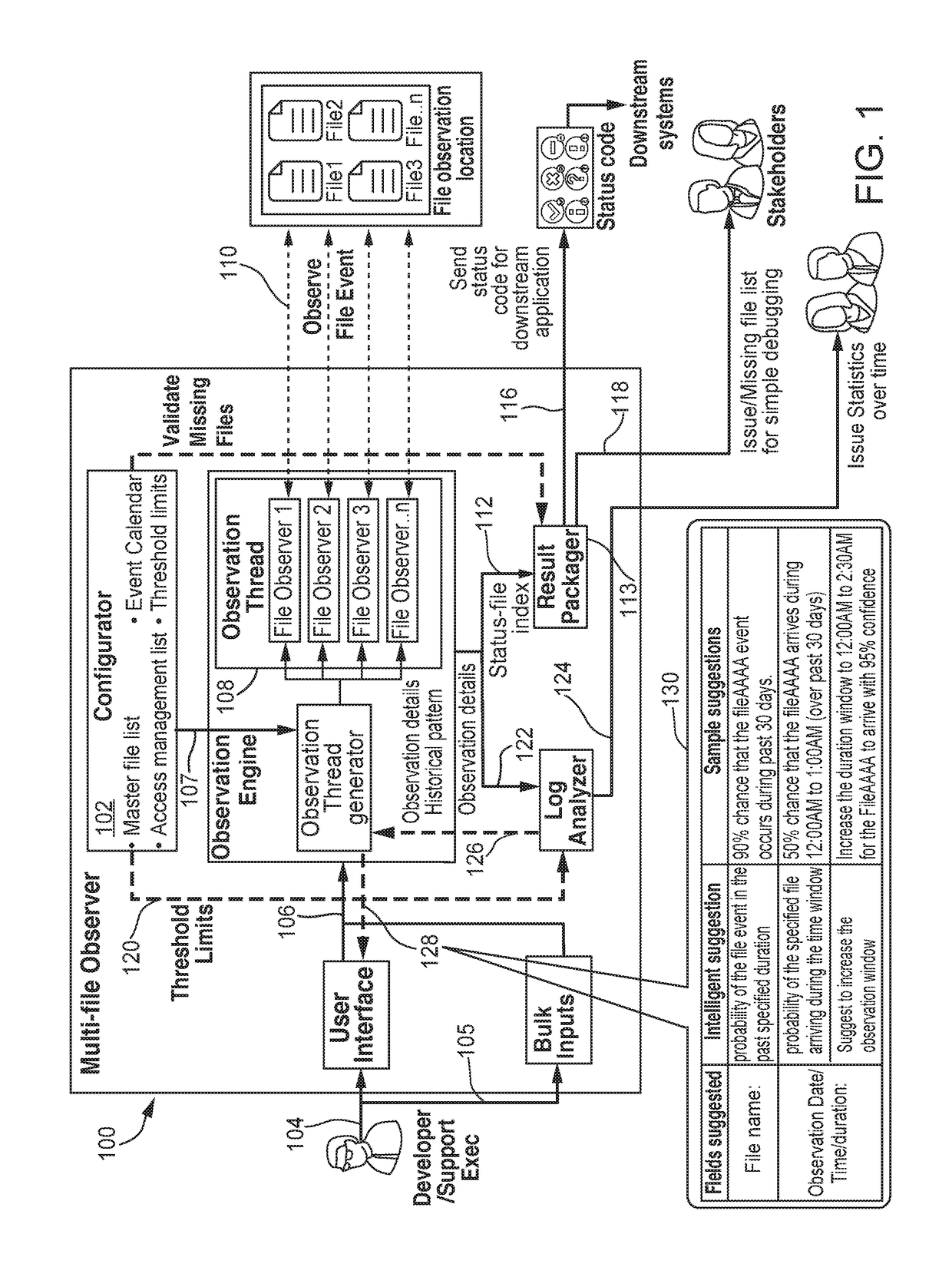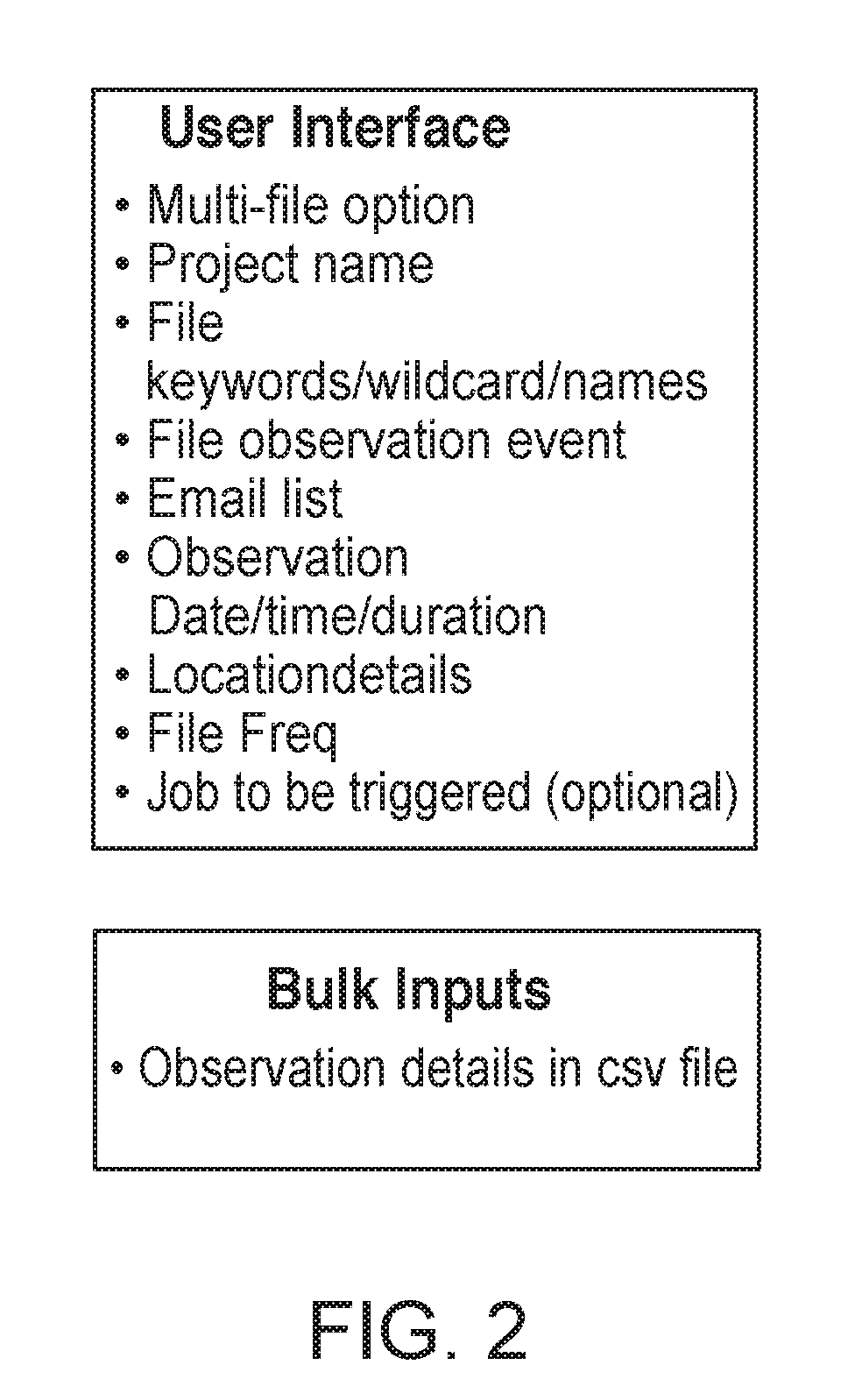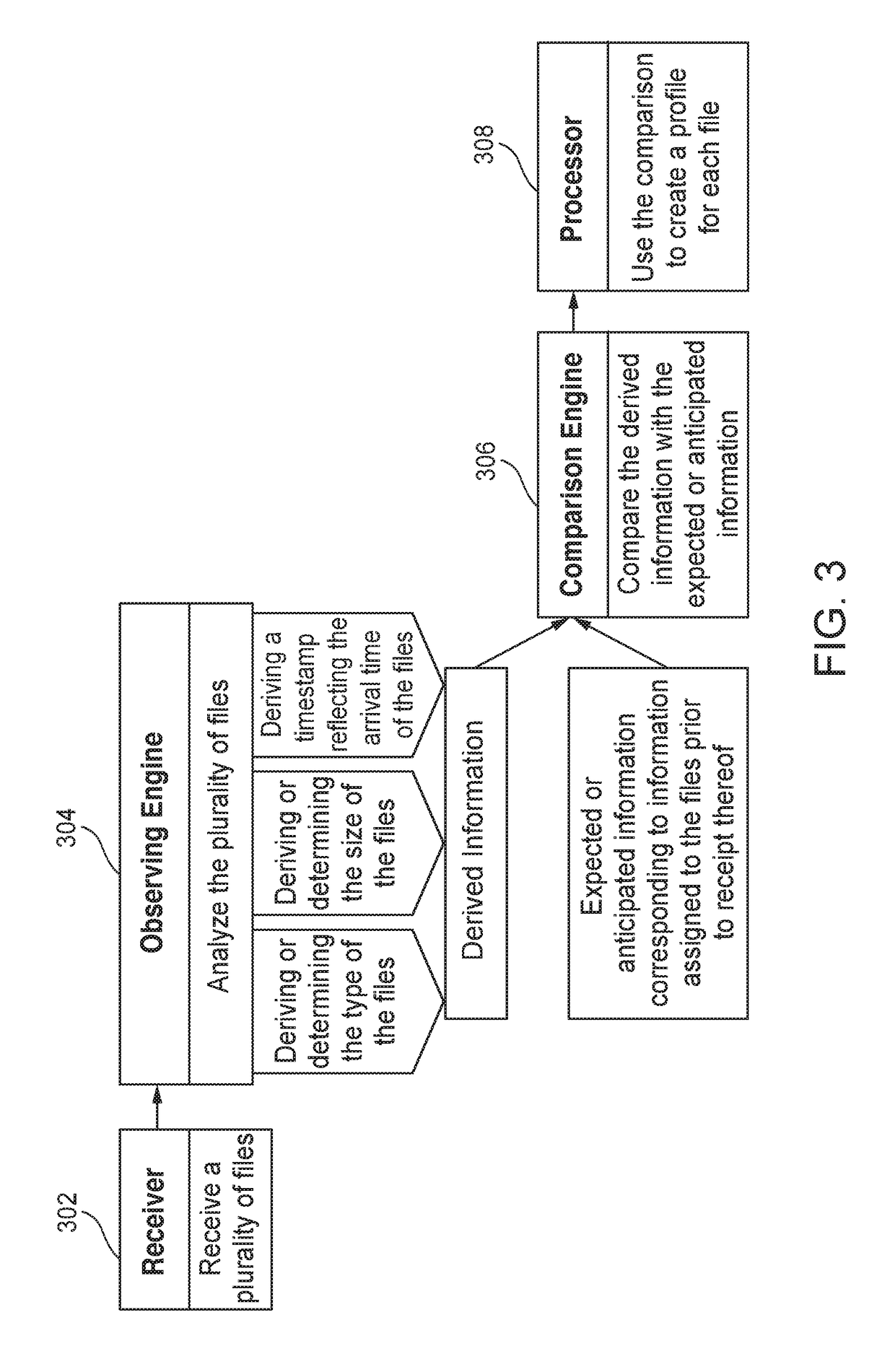Predictive analysis, scheduling and observation system for use with loading multiple files
a scheduling and analysis system technology, applied in the field of monitoring file loading, can solve the problems of user or system, inability to use historical information to make educated predictions, in the future, relating to similar files, and time-consuming and tedious creation of multiple watcher scripts. the effect of system resources
- Summary
- Abstract
- Description
- Claims
- Application Information
AI Technical Summary
Benefits of technology
Problems solved by technology
Method used
Image
Examples
Embodiment Construction
[0033]Apparatus and methods for monitoring loading of multiple files is provided. The method may include receiving a plurality of files at a server. Each of the received files may be associated with a specific task. The method may also include analyzing each file included in the plurality of files.
[0034]The analysis may include deriving and / or otherwise determining the size and type of each file. The analysis may include deriving a timestamp reflecting the arrival time of each of the files at a server.
[0035]The method may include comparing derived information with expected or anticipated information. The derived information may include the size and type of each of the plurality of files. The derived information may include the timestamp reflecting the arrival time of each of the plurality of files. The expected or anticipated information may correspond to information assigned to the files prior to receipt thereof. In some embodiments, the expected or anticipated information may be u...
PUM
 Login to View More
Login to View More Abstract
Description
Claims
Application Information
 Login to View More
Login to View More - R&D
- Intellectual Property
- Life Sciences
- Materials
- Tech Scout
- Unparalleled Data Quality
- Higher Quality Content
- 60% Fewer Hallucinations
Browse by: Latest US Patents, China's latest patents, Technical Efficacy Thesaurus, Application Domain, Technology Topic, Popular Technical Reports.
© 2025 PatSnap. All rights reserved.Legal|Privacy policy|Modern Slavery Act Transparency Statement|Sitemap|About US| Contact US: help@patsnap.com



